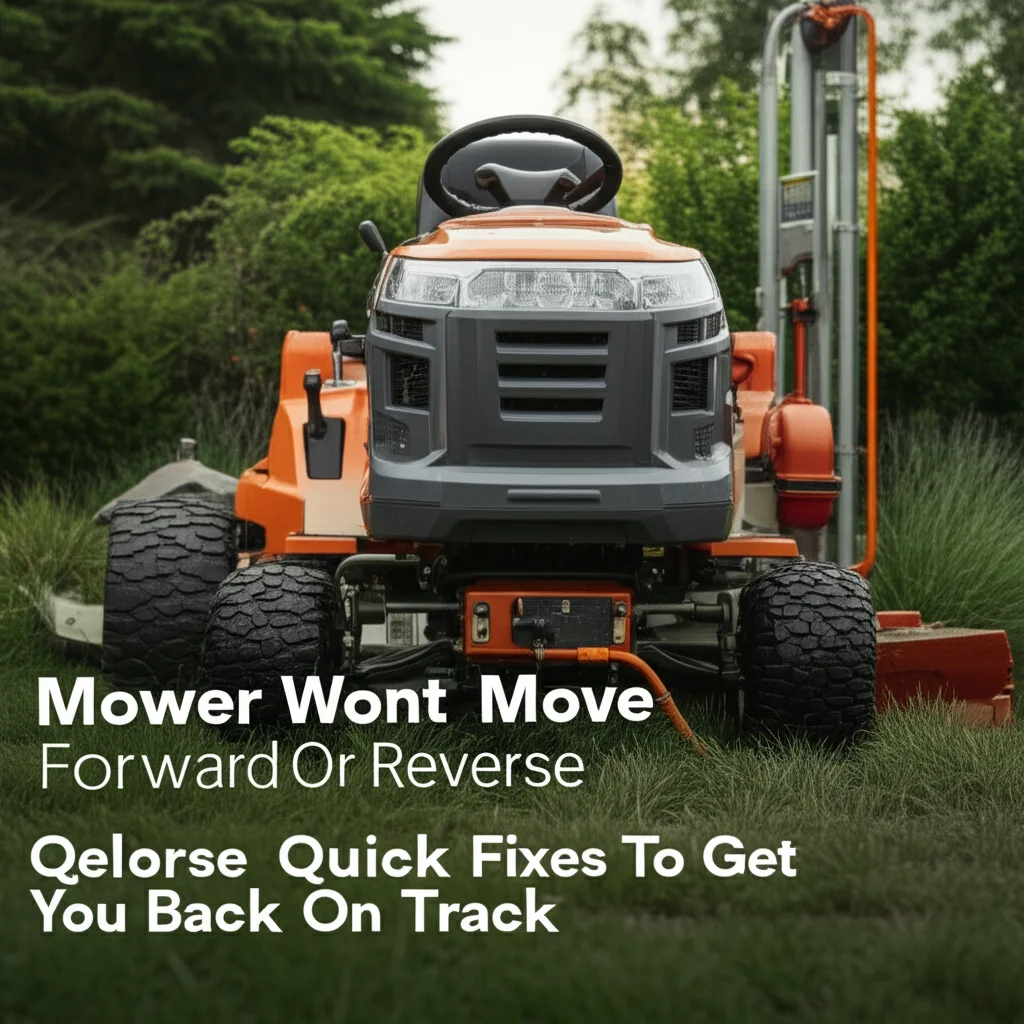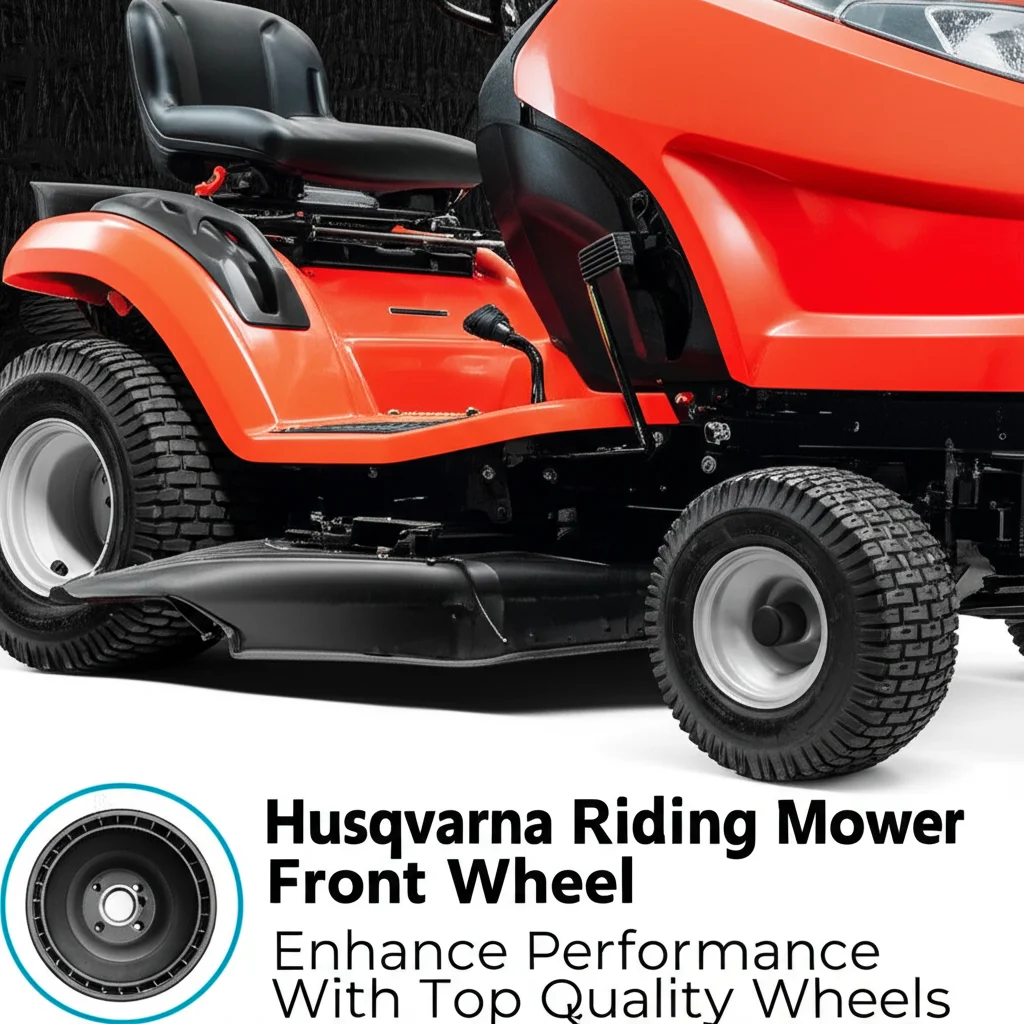· Lawn Mower Maintenance · 6 min read
Husqvarna Riding Mower Wont Move Forward Or Reverse Quick Fixes To Get You Back On Track

Husqvarna Riding Mower Won’t Move: Simple Solutions
Is your weekend project stalled because your Husqvarna riding mower refuses to budge? It’s incredibly frustrating when your mower won’t move forward or in reverse, halting your lawn care plans. Fortunately, many issues causing this are simple to diagnose and fix yourself. This article will walk you through common problems and provide quick fixes to get you back on track, saving you time and money. We’ll cover everything from checking the basics to addressing potential mechanical issues with your Husqvarna riding mower.
Takeaway:
- Check the safety switch and ensure it’s engaged correctly.
- Inspect the drive belt for wear or breakage.
- Examine the transmission fluid level and condition.
- Look for obstructions in the mower deck or wheels.
A Husqvarna riding mower that won’t move can stem from a few key areas. Typically, the problem lies within the drive system, safety mechanisms, or a simple obstruction. Let’s dive into the solutions.
1. Safety Switch Issues: The First Check
The safety switches on your Husqvarna riding mower are designed to protect you. If the seat switch isn’t engaged, or the brake pedal isn’t fully depressed, the mower won’t move. This is a common reason why a mower won’t respond. Start by ensuring you are properly seated and the brake pedal is firmly pressed down.
- Seat Switch: Make sure the seat switch is functioning correctly. Sometimes, these switches can become faulty.
- Brake Pedal: Verify the brake pedal is fully depressed. A partially engaged brake will prevent movement.
- Blade Engagement: Ensure the blades are disengaged before attempting to move. Some models require this for the drive system to activate.
If you suspect a faulty switch, testing it with a multimeter is recommended. Replacing a faulty safety switch is a relatively inexpensive repair. Keeping your mower clean is also important; a dirty switch can malfunction. You can learn more about general lawn mower cleaning here.
2. Inspecting the Drive Belt: A Common Culprit
The drive belt is responsible for transferring power from the engine to the wheels. A worn, cracked, or broken drive belt is a frequent cause of a Husqvarna riding mower not moving. This is a relatively easy component to inspect and replace.
- Visual Inspection: Carefully examine the drive belt for any signs of wear, fraying, or breakage.
- Tension Check: Ensure the belt has proper tension. A loose belt will slip and not effectively transfer power.
- Replacement: If the belt is damaged, replace it with a new one specifically designed for your Husqvarna model.
Replacing a drive belt usually involves removing the mower deck and accessing the belt housing. Consult your owner’s manual for specific instructions. A damaged belt can cause significant issues, so addressing it promptly is crucial.
3. Transmission Fluid Level and Condition: Keeping Things Smooth
The transmission fluid lubricates the gears and components within the transmission, allowing for smooth forward and reverse operation. Low or contaminated transmission fluid can cause the mower to struggle or refuse to move.
- Fluid Level Check: Locate the transmission dipstick (refer to your owner’s manual) and check the fluid level. Add fluid if necessary, using the type specified by Husqvarna.
- Fluid Condition: Examine the fluid for any signs of contamination, such as metal shavings or a milky appearance.
- Fluid Change: If the fluid is dirty or contaminated, a complete transmission fluid change is recommended.
Using the correct type of transmission fluid is vital. Incorrect fluid can damage the transmission. Regular fluid checks and changes are essential for maintaining the longevity of your mower’s transmission.
4. Obstructions in the Mower Deck or Wheels: A Simple Oversight
Sometimes, the simplest explanation is the correct one. Debris lodged in the mower deck or around the wheels can prevent movement.
- Mower Deck: Check for grass clippings, sticks, or other debris that may be obstructing the blades or wheels.
- Wheels: Ensure the wheels are free to rotate and aren’t blocked by anything.
- Steering Linkage: Inspect the steering linkage for any obstructions or damage.
A thorough visual inspection of the entire underside of the mower can reveal hidden obstructions. Removing any debris will often restore movement.
5. Hydrostatic Transmission Issues: More Complex Problems
If the previous checks don’t resolve the issue, the problem may lie within the hydrostatic transmission itself. This is a more complex component and may require professional repair.
- Hydro Filter: A clogged hydrostatic filter can restrict fluid flow and cause movement problems.
- Hydro Pump: A failing hydro pump can also prevent the mower from moving.
- Internal Leaks: Internal leaks within the transmission can reduce pressure and affect performance.
Diagnosing hydrostatic transmission issues often requires specialized tools and knowledge. If you’re not comfortable working with these components, it’s best to consult a qualified mechanic.
6. Checking the Forward/Reverse Control Linkage
The linkage connecting the forward/reverse lever to the transmission can sometimes become disconnected or damaged. This prevents the transmission from engaging properly.
- Visual Inspection: Examine the linkage for any broken or disconnected parts.
- Adjustment: If the linkage is loose, try adjusting it according to the manufacturer’s specifications.
- Lubrication: Lubricate the linkage points to ensure smooth operation.
A properly functioning control linkage is essential for seamless shifting between forward and reverse.
7. Carburetor Issues: Fuel Delivery Problems
While less common, a dirty or malfunctioning carburetor can sometimes contribute to a mower not moving, especially if it’s struggling to maintain engine power. A lack of power can prevent the transmission from engaging effectively. You might want to consider cleaning your carburetor. Here’s a guide on how to clean a Husqvarna riding lawn mower carburetor.
- Fuel Flow: Ensure fuel is reaching the carburetor.
- Cleaning: Clean the carburetor to remove any blockages.
- Adjustment: Adjust the carburetor settings according to the manufacturer’s specifications.
Frequently Asked Questions (FAQ)
Q: Why won’t my Husqvarna riding mower move even when the brake is pressed? A: This could indicate a faulty seat switch, a problem with the drive belt, or an issue with the transmission. Double-check the seat switch is functioning and inspect the belt for damage. If those are okay, the transmission may need professional attention.
Q: How often should I change the transmission fluid in my Husqvarna riding mower? A: Typically, transmission fluid should be changed every 25-50 hours of operation, or at least once a year. Refer to your owner’s manual for specific recommendations.
Q: What type of transmission fluid should I use in my Husqvarna riding mower? A: Use only the type of transmission fluid specified by Husqvarna. Using the wrong fluid can damage the transmission.
Q: Can a low battery cause my Husqvarna riding mower not to move? A: While less common, a very low battery can sometimes prevent the mower from engaging the drive system. Ensure your battery is fully charged.
Q: Is it safe to try and fix these issues myself? A: Many of these fixes are relatively simple and can be done by a homeowner with basic mechanical skills. However, if you’re uncomfortable working on your mower, it’s best to consult a qualified mechanic.
Conclusion
A Husqvarna riding mower that won’t move forward or reverse can be a frustrating problem, but often, the solution is within reach. By systematically checking the safety switches, drive belt, transmission fluid, and for any obstructions, you can often diagnose and fix the issue yourself. Remember to always consult your owner’s manual for specific instructions and safety precautions. Don’t let a stalled mower ruin your weekend – get back to enjoying a beautifully maintained lawn! If you’ve tried these steps and your mower still won’t move, it’s time to seek professional help.
- Husqvarna Riding Mower
- Riding Mower Repair
- Lawn Mower Troubleshooting


